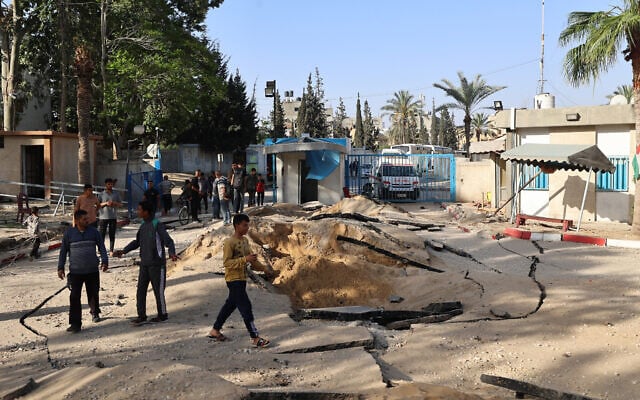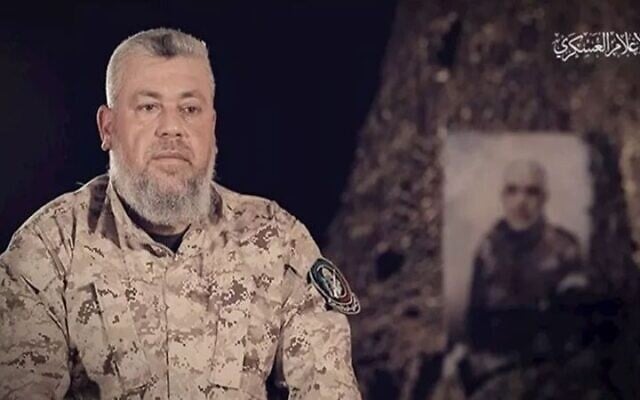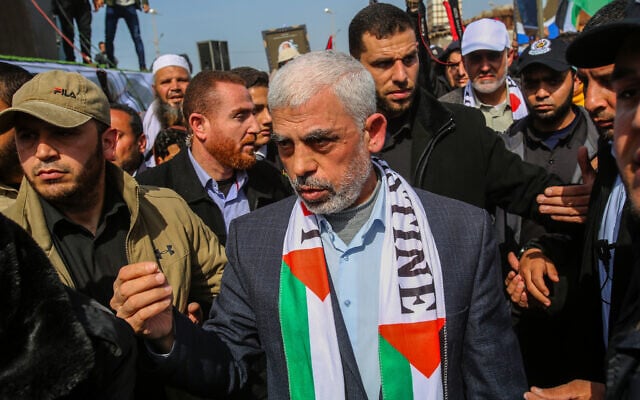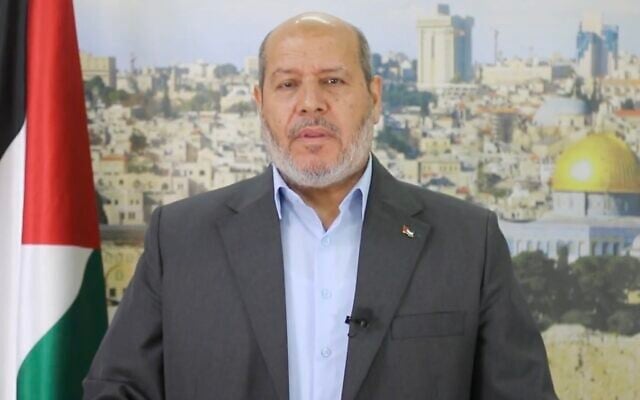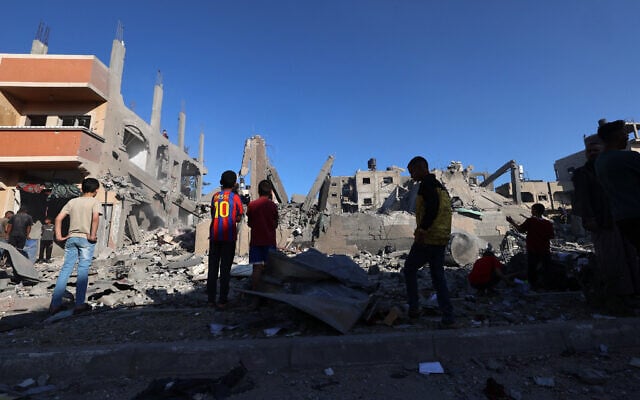



On Tuesday afternoon, Israeli forces launched a wave of airstrikes on underground infrastructure near the European Hospital in Khan Younis, sending plumes of gray smoke into the sky above southern Gaza.
Israeli security officials say the massive bombardment was aimed at Muhammad Sinwar, thought to be the de facto leader of the Hamas terror group in Gaza.
Sinwar assumed leadership of Hamas’s military wing following the July assassination of its previous leader Mohammed Deif, and later emerged as the group’s top commander in the Strip after his older brother Yahya Sinwar, who had been Hamas’s leader, was killed by Israeli forces in late October.
According to Hamas-run Gaza health authorities, at least 16 people were killed and over 70 were wounded in the Tuesday strikes as air force jets dropped dozens of bombs around the hospital. As of Wednesday afternoon, it was uncertain if Sinwar was among them.
Israeli intelligence believes Sinwar was inside the targeted tunnels at the time of the attack.
According to security sources, if he was inside, he was likely killed due to the force of the strike, but confirmation is still pending.
Even if he was killed, though, it remains unclear how much of an impact his assassination would have on the terror group, whose senior leadership largely lives outside the Gaza Strip.
Israeli officials have described Sinwar as obstinate with regard to negotiations with Hamas for the release of hostages, and an obstacle to reaching a ceasefire deal. But unlike his brother, who had wielded considerable influence over the direction of talks and the group’s strategic planning, it seems Muhammad Sinwar had only a limited role in either.
The younger Sinwar’s death might be felt keenly inside Hamas’s armed wing, where it would deepen a leadership vacuum, with most of the group’s top figures living abroad since the war began with the October 7, 2023, attack on southern Israel.
There are two potential successors who can replace him in managing Hamas’s military wing and attempting to rebuild it during the ongoing war.
The first is Izz ad-Din Haddad, commander of Hamas’s Gaza City Brigade, who is a longtime fixture within the senior echelons of Hamas’s armed wing. During the war, Haddad was promoted to oversee the entire Gaza Strip.
Haddad rarely appears in public, but in May 2022 was seen in a video threatening Israel. In January, he went on Al-Jazeera and disclosed his role in planning the October 7 massacre. His face was blurred for the interview.
Another candidate is Mohammad Shabana, commander of the Rafah Brigade, who has risen through the ranks over the years. He reportedly survived an Israeli airstrike in May 2024 targeting a tunnel in Rafah. In March 2025, his wife and five children were killed in an Israeli strike.
Like Haddad, Shabana is relatively unknown in Gaza and has not appeared in public during the war.
Both are veteran Hamas fighters who could help the organization continue its operations against Israel and even recover some strength.
But neither would likely have significant influence over Hamas’s strategic decision-making process, similar to the limited role played by Muhammad Sinwar.
While Yahya Sinwar was known as a central Hamas figure with sway over ceasefire negotiations and final say over hostage deals, there is little evidence that his little brother has held a comparable position.
Yahya Sinwar was elected by Hamas members as the group’s Gaza leader in 2017 and officially appointed by the senior members of Hamas as the movement’s overall chief in August 2024. In contrast, Muhammad Sinwar has never been part of the political bureau.
Despite operating while in hiding inside Gaza, unlike the rest of the group’s Qatar-based senior leadership, Yahya Sinwar was reportedly given final say in indirect negotiations between Hamas and Israel that largely took place in Cairo.
Israeli sources indicated that the need to consult with Sinwar for Hamas’s answer in talks led to significant delays, with an elaborate system of mediators used to convey messages back and forth, according to The Wall Street Journal.
“We’ll have to wait for Yahya Sinwar’s reply from the tunnels on every comma and detail of the negotiation,” one Israeli defense source was quoted complaining in March 2024, according to Channel 12 news.
None of this occurred under Muhammad Sinwar once he took over. Recent negotiations have been conducted with Hamas’s political leadership outside Gaza, and there have been no reports of delays due to the need to wait for Mohammad Sinwar’s input. Even the indirect channel between Hamas and the United States that led to the release of hostage soldier Edan Alexander on Monday was conducted via senior Hamas officials in Qatar.
Though Muhammad Sinwar was considered Hamas’s de facto chief, officially the group is run by a by a five-member leadership council.
All members are senior figures from the political wing with no direct involvement in military operations. All reside outside Gaza — some have been abroad for years, while others left the Strip shortly before the war began.
The council includes Hamas spokesman Khalil al-Hayya, who is its top man for Gaza, though he likely wields little sway inside the Strip from his Gulf perch.
The remaining council members are Khaled Mashaal, Hamas leader abroad;
Zaher Jabarin, head of Hamas in the West Bank; Mohammad Darwish, head of Hamas’s Shura Council, who is responsible for long-term strategic decisions; and Nizar Awadallah, a member of Hamas’s political bureau.
Operating from deep underground in Gaza, in limited contact with the group’s senior leadership and holding little experience outside of military affairs, it’s tough to see how Muhammad Sinwar could have been a decisive voice on the ceasefire issue.
While Hamas’s armed wing has leverage in any hostage deal due to its direct custody of those it abducted from Israel on October 7, its influence over broader strategic decisions is limited.
Should Sinwar’s death be confirmed, it will almost certainly have no impact on the group’s positions or demands in hostage and ceasefire negotiations, which will continue to be determined by the leadership outside of Gaza. The deepest impact, therefore, might simply be that the sides will no longer have him to blame for their inability to make progress on freeing the hostages and ending the war.

